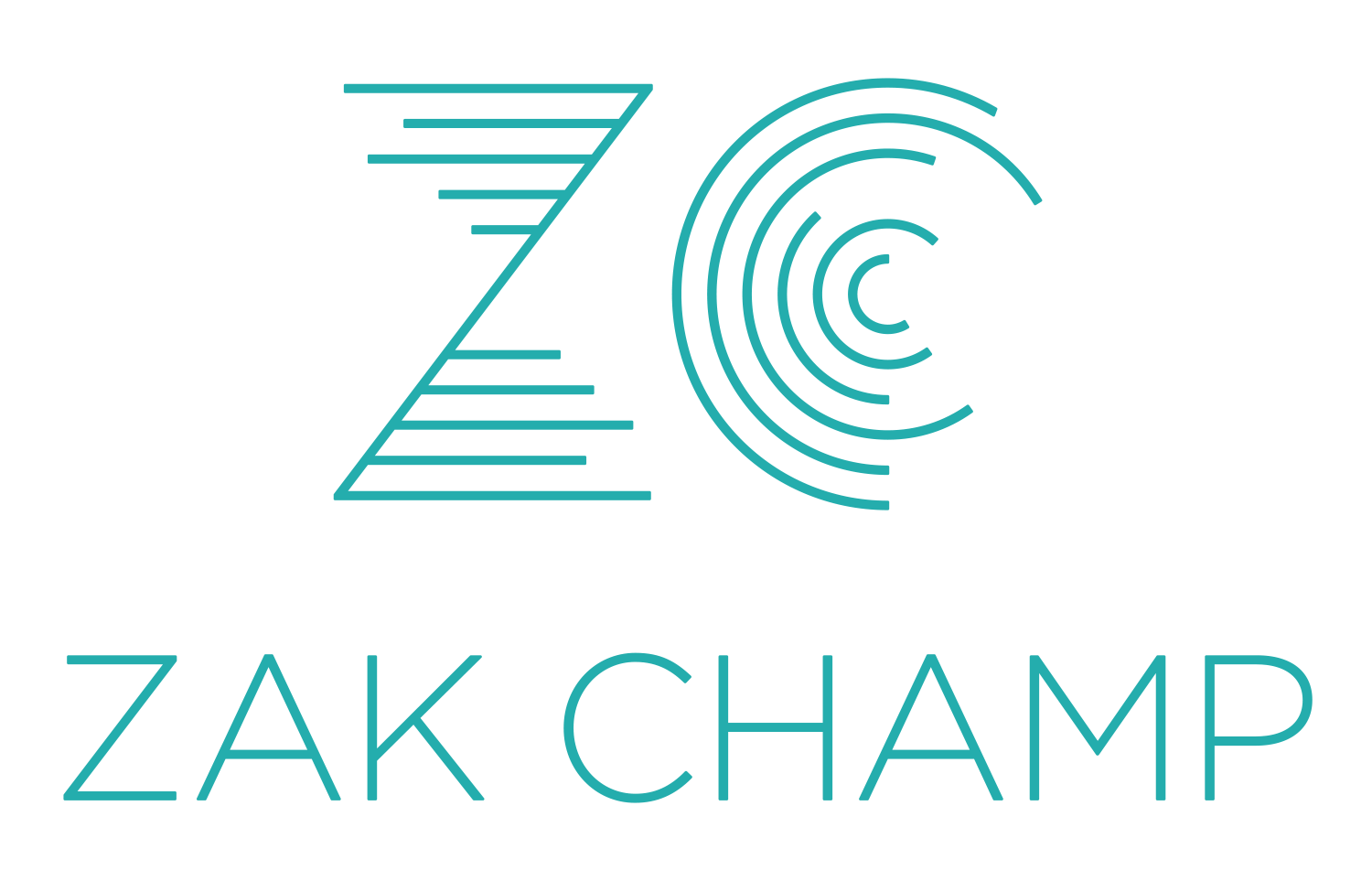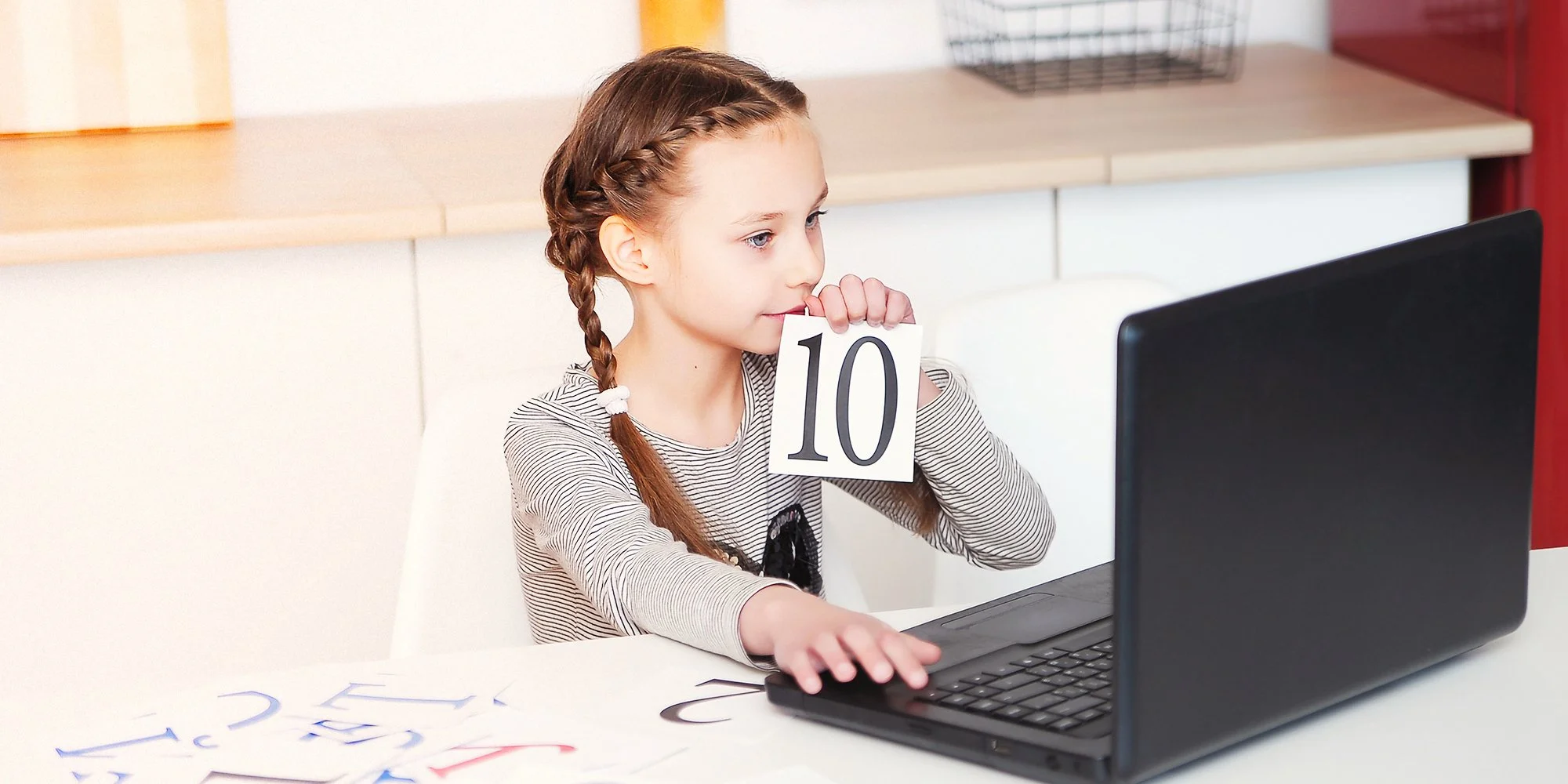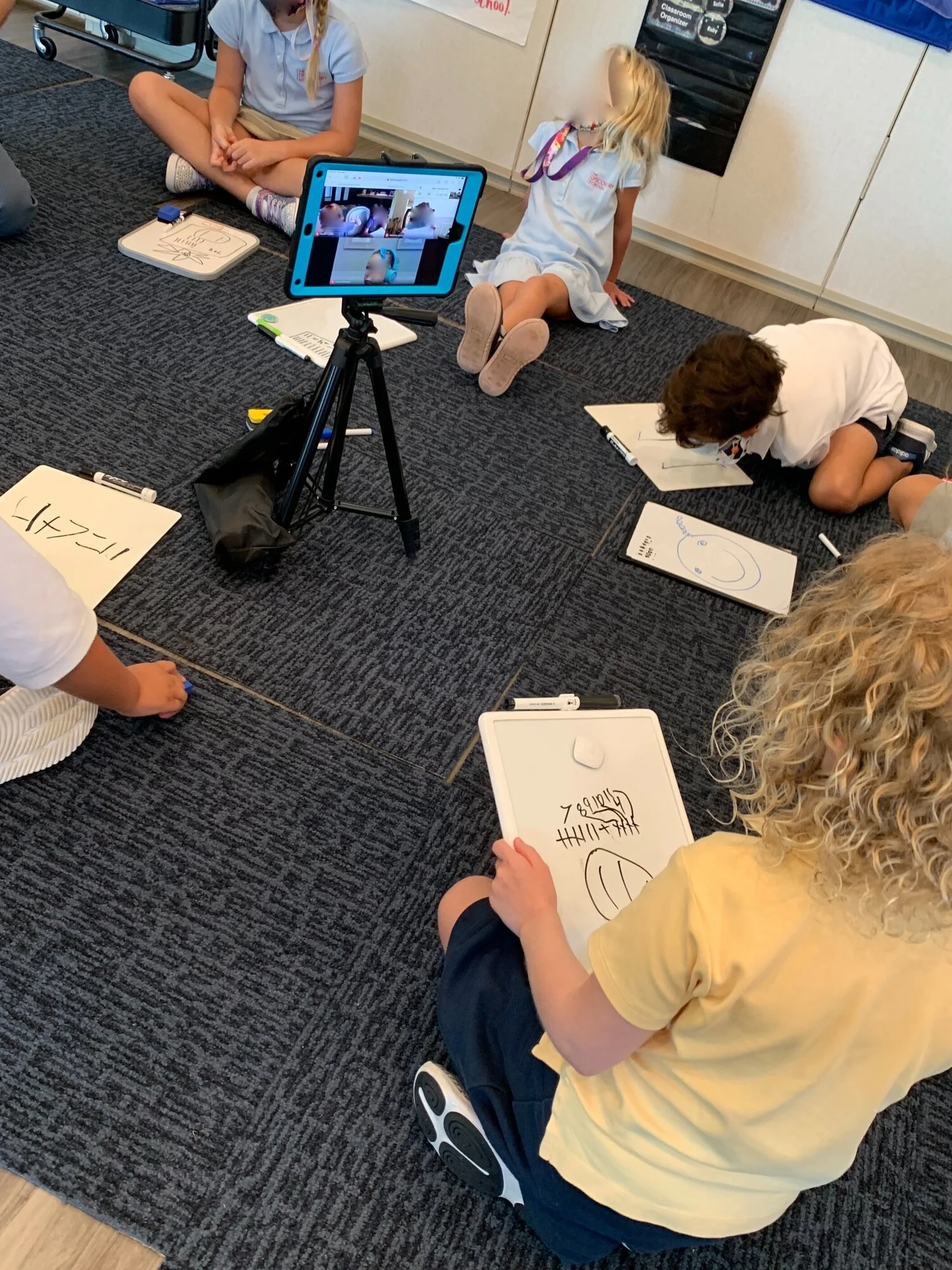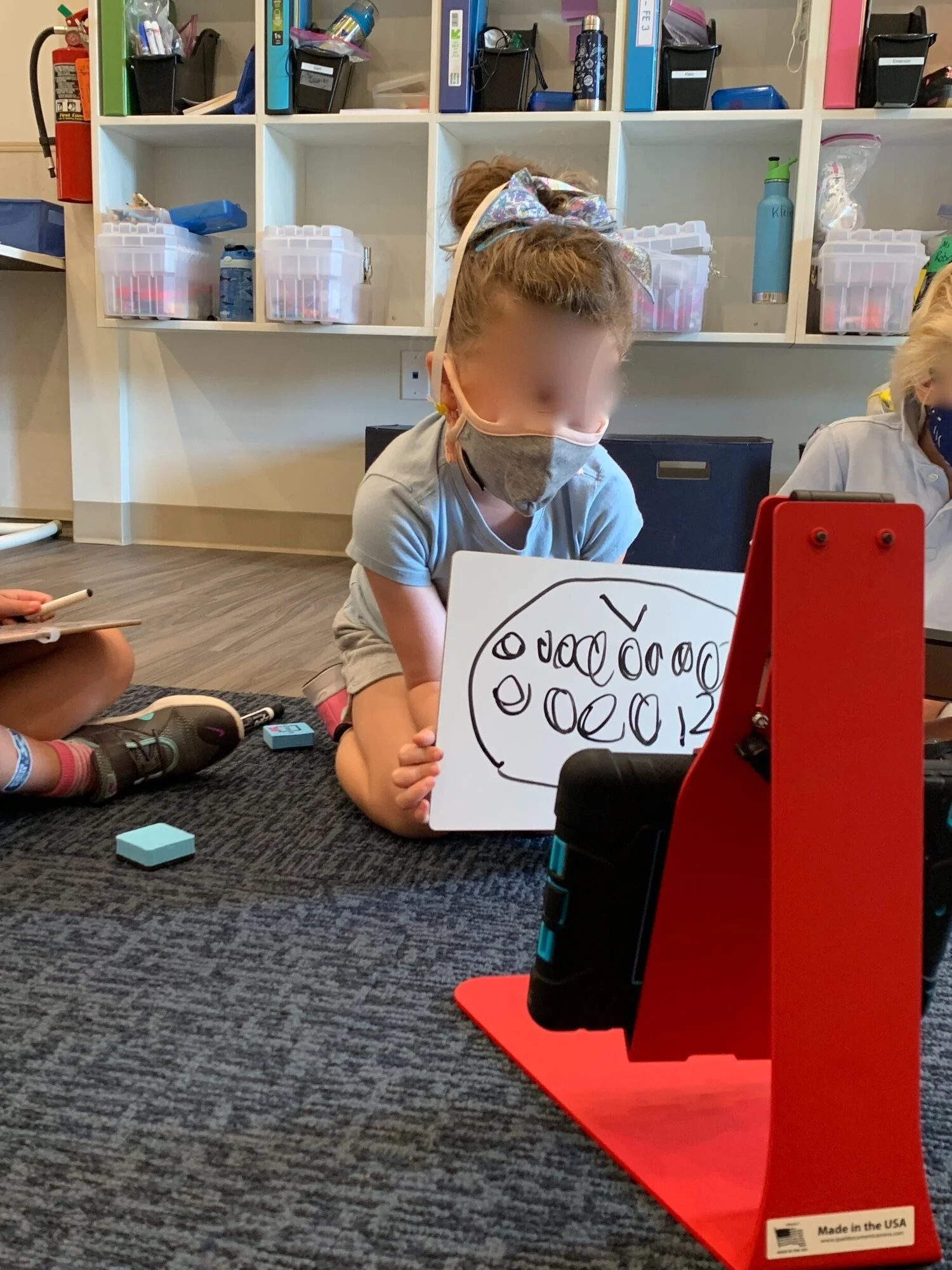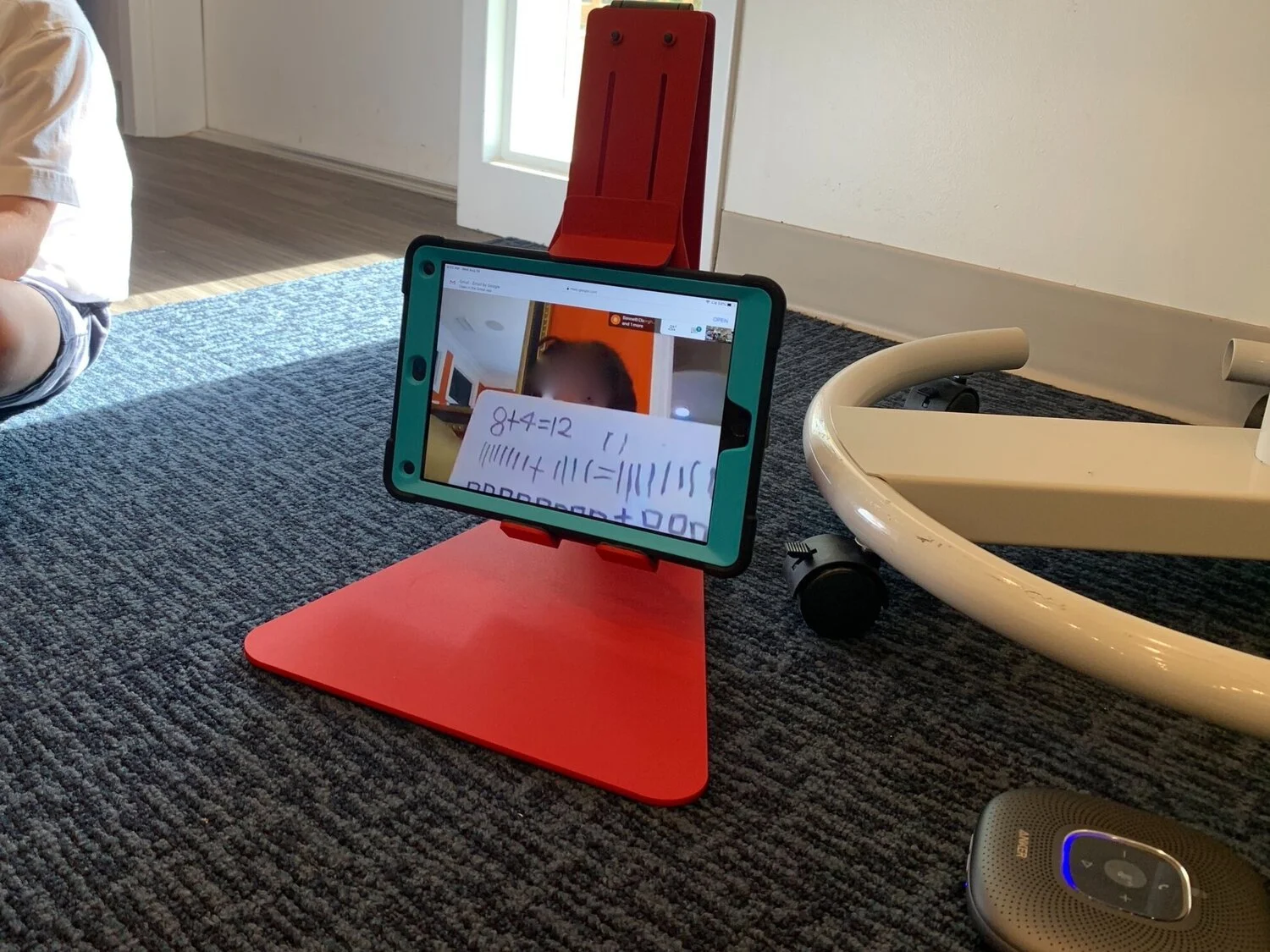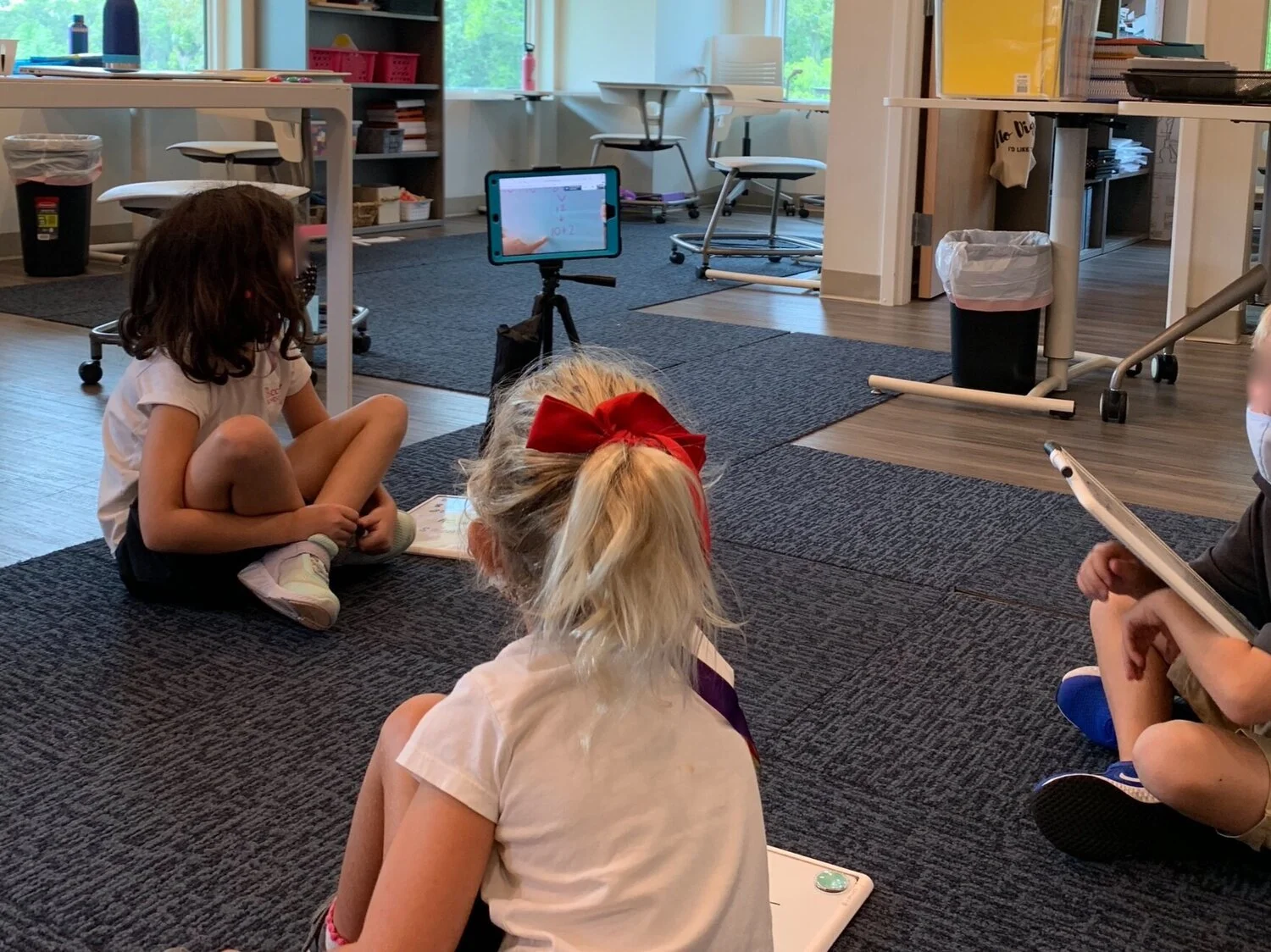The New Normal
The 2020-2021 school year is here. And somehow, in the middle of a global pandemic, our campus is open for families that want their children to come on campus face to face. We also have a remote option, but most students are with us on campus. Do with that what you will. But, that won’t be the focus of this post.
What I want to talk about is what we are doing to support each and every student during this time. Not because I think we have it all figured out. Not by any stretch of the imagination. But, because I want to learn with you. I want to hear what you are doing. And to start that conversation, I want to share what we are doing.
Our classrooms are what I would call hybrid. They are composed of both face-to-face and remote learners existing in the same space live. I first learned how to do this hybrid work with my friend and colleague, Mike Flynn at Mount Holyoke’s Math Leadership Program. The two first/second grade classrooms I am working in each have eight face-to-face students and four remote students.
When math class begins, I log into a Google Meet room (I agree zoom is superior, but our school made the decision to use Google Meet). The remote learners also log into that room in real-time. I put the iPad on a tripod and hook it up to a speaker/microphone combo.
Side note—this speaker/microphone combo has proven to be VERY helpful for capturing good audio in the classroom. Ideally, the microphone should be omnidirectional to pick up sound from any part of the room.
From there, I facilitate my math lesson almost as normal, but I make sure to focus on both the face-to-face students and the remote ones. Right now, our lessons flow like this.
I start off with our story problem routine.
Students share strategies (both face to face and remote learners)
Students are provided work time. They work independently, with partners, in small groups (some small groups are a hybrid group with an iPad and face-to-face students), or as a whole class.
We come back together as a whole group to discuss.
I believe that for our specific mathematics classroom community this is the best way to keep student thinking at the forefront. Kids can engage with each other and each other’s mathematical thinking, whether they are physically present in the room or not.
Here’s what it looks like in action:
View of our story problem sharing with four remote learners.
Face to face student sharing her strategy with the whole group.
Face to face student sharing her strategy with the whole group.
Face to face student sharing her strategy with the whole group.
Remote learner sharing strategy with whole group (includes microphone)
Small group meeting with remote learner sharing strategy.
OTHER NOTES
We found it was important during the first few days of school to meet with our remote learners to do rituals and routines that were specific to their situation. Things like how to mute the microphone, turn on/off the camera, pin a video, appropriately use the chat box, and what to do if the internet goes down.
We strongly encouraged our remote learners to have small dry erase boards and a marker. This helps tremendously when they share their work on the screen. Our face to face learners have them as well.
We also encouraged headphones for everyone. This helps ensure privacy as they work from the other distractions that happen at home.
For now, it’s working. I’m sure it will continue to change and get better. But, for now, we have students who are face to face and students that are remote learning and working together in a student-centered classroom. And that feels good.
